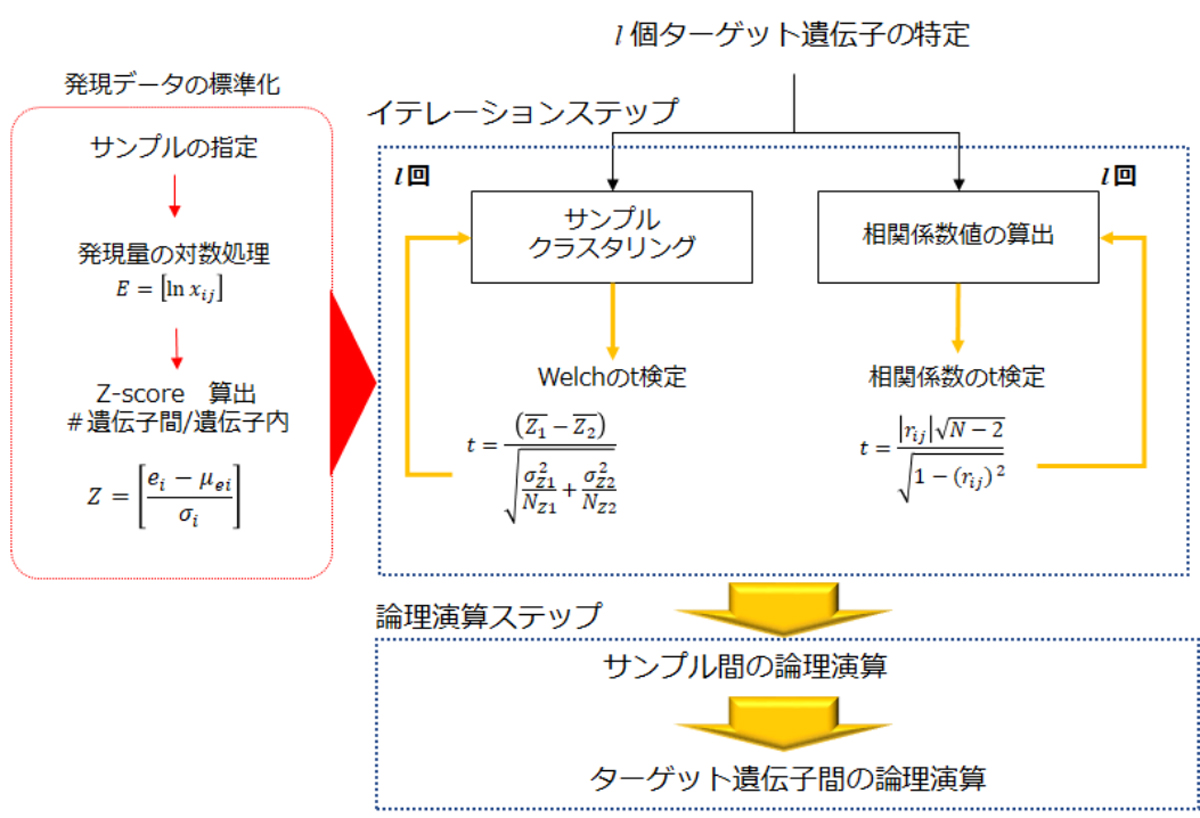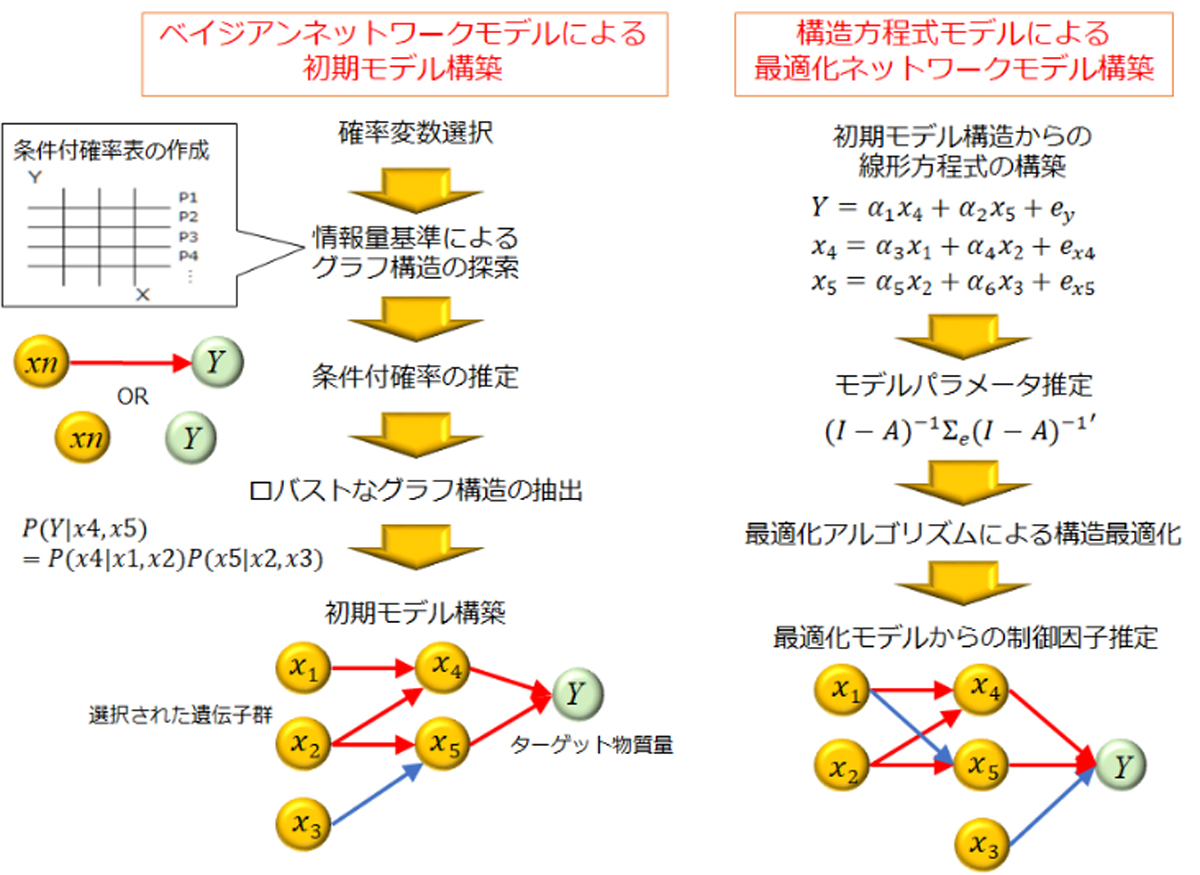In order to achieve efficient material production by microorganisms, it is necessary to understand the underlying mechanisms of phenomena occurring in microbial cells during material production and regulate the phenomena as an operating system. For understanding and utilizing this complex "system" in living cells, a network model of gene expression regulations is useful. By constructing the regulatory relationship between genes as a network model, we were able to express the process occurring in living cells in a causal graph. This has led us to the development of a technology that allows the search for modification sites necessary for the bottleneck search in the process and for promoting efficiency.
First, we developed a technology for estimating gene groups that contribute to the material productivity. It is estimated that, in living cells, about 10% to 20% of genes are required for intracellular phenomena, such as material production. Therefore, it is necessary to identify gene groups that contribute to material production. In this study, we have developed a work flow that allows the gene groups related to material production to be extracted with higher accuracy, by combining statistical testing, correlation analysis and logical operations (Fig. 1).

図1.論理演算を組み合わせた遺伝子選択フロー
Secondly, we developed a technology for network modeling of the regulatory relationships between genes. The gene groups selected in the previous section are likely to correlate with the production level of the target material, and there is no directionality in the relationship between the selected gene groups and the target materials. Therefore, it is necessary to identify the genes that are located upstream of the target material and can be regulatory factors to control the production level of a target material in the material production process, from the selected gene groups, using the network model. In this study, we are working on the high-accuracy estimation of network structures, by combining Bayesian networks1 and the structure equation modeling2,3 developed by the National Institute of Advanced Industrial Science and Technology (AIST) (Fig. 2).

図2.ネットワークモデル構築とグラフ構造からの制御因子推定
Due to the involvement of the recursive structures of the constructed network models, we have estimated and proposed "what node (gene)" existing on the network model can be an efficient regulatory factor to control the amount of a target material. In addition, we have developed an algorithm to search for regulatory factors necessary to control (maximize or minimize) the amount of a target material, and proposed candidate genes to be modified. So far, we have succeeded in searching for genes that contribute to a 2- to more than 10-fold increase in production level.




